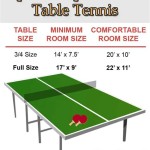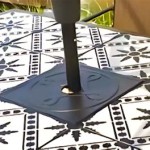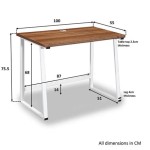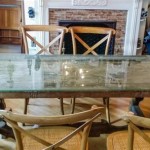Dining Room Side Table Decorating Ideas
The dining room side table, often relegated to a secondary role, presents a valuable opportunity to enhance the aesthetic appeal and functionality of the dining space. More than just a surface for holding serving dishes or drinks, a well-decorated side table can contribute significantly to the overall ambiance, showcasing personal style and adding visual interest. Effective side table decoration involves careful consideration of size, style, and purpose, ensuring that it complements the existing décor and serves a practical purpose.
Before embarking on any decorating endeavor, it is crucial to assess the existing dining room décor. This includes the style of the dining table and chairs, the color palette of the walls and flooring, and the overall theme of the room. A side table should ideally complement these elements, either blending seamlessly with the existing style or providing a deliberate and contrasting accent. For instance, a modern dining room with clean lines might benefit from a minimalist side table with geometric shapes, while a traditional dining room could be enhanced by a more ornate side table with carved details.
The size of the side table is another critical consideration. A table that is too large can overwhelm the space and obstruct traffic flow, while a table that is too small might appear insignificant and fail to make a visual impact. It is important to measure the available space and choose a side table that is proportionate to the room and its surroundings. The height of the side table should also be considered, ideally aligning with the height of the dining table or other furniture in the room to create a cohesive look.
Material selection for the side table also plays a crucial role in its overall aesthetic. Wood is a classic and versatile choice, available in a variety of finishes to complement different styles. Metal side tables offer a modern and industrial look, while glass or acrylic side tables can create a sense of lightness and transparency. The choice of material should align with the overall design aesthetic of the dining room and the intended purpose of the side table.
Once the side table itself has been chosen, the next step is to consider the decorative elements that will be placed on it. These elements should be carefully selected to create a visually appealing and functional display, reflecting personal taste and enhancing the overall ambiance of the dining room.
Creating Visual Balance and Symmetry
One of the fundamental principles of interior design is visual balance. Applying this principle to side table decoration involves arranging objects in a way that creates a sense of equilibrium and harmony. Symmetrical arrangements, where identical or similar objects are placed on either side of a central point, are often used to create a formal and elegant look. This approach is particularly effective for traditional dining rooms. For example, a pair of identical lamps flanking a central vase of flowers can create a balanced and visually appealing display.
Asymmetrical arrangements, on the other hand, tend to create a more casual and dynamic look. This approach involves arranging objects of different sizes, shapes, and textures in a way that still feels balanced. For instance, a tall lamp on one side of the table could be balanced by a stack of books and a small decorative object on the other side. Achieving balance in an asymmetrical arrangement requires careful consideration of the visual weight of each object, ensuring that no one element dominates the display.
The concept of visual weight refers to the perceived heaviness of an object based on its size, color, and texture. Darker colors and larger sizes tend to have a greater visual weight than lighter colors and smaller sizes. When arranging objects on a side table, it is important to distribute the visual weight evenly to create a sense of balance. This can be achieved by placing larger objects closer to the center of the table and smaller objects towards the edges, or by balancing dark-colored objects with lighter-colored ones.
Another technique for creating visual balance is to use the principle of thirds. This involves dividing the surface of the side table into three equal sections, both horizontally and vertically, and placing objects at the points where these lines intersect. This creates a visually interesting and dynamic arrangement that is pleasing to the eye. The rule of thirds can be applied to both symmetrical and asymmetrical arrangements, providing a framework for creating balance and harmony.
In addition to balance, symmetry can also play a crucial role in side table decoration. While asymmetrical arrangements can create a more casual and dynamic look, symmetrical arrangements often convey a sense of formality and elegance. The choice between symmetry and asymmetry depends on the overall design aesthetic of the dining room and the desired mood.
Incorporating Functional Elements
While aesthetics are important, a well-decorated side table should also be functional. This means incorporating elements that serve a practical purpose, such as providing extra storage, displaying serving dishes, or offering a convenient spot for drinks and appetizers. Integrating functional elements seamlessly into the decorative scheme can enhance the overall usability of the dining room.
One common functional element is a storage container. This could be a decorative box, a woven basket, or a stylish tray. Storage containers can be used to store napkins, silverware, coasters, or other dining essentials, keeping them within easy reach while also adding a touch of visual interest to the side table. The style of the storage container should complement the overall décor of the dining room, whether it is a rustic wooden box or a sleek metal tray.
Another functional element is a serving platter or tray. This can be used to display appetizers, desserts, or drinks, making it easy for guests to serve themselves. A decorative serving platter can also add a touch of elegance to the side table, especially when used to display colorful fruits or pastries. The material and style of the serving platter should align with the overall design aesthetic of the dining room.
A lamp is another functional element that can be incorporated into side table decoration. A table lamp can provide ambient lighting for the dining room, creating a warm and inviting atmosphere. It can also serve as a reading light, allowing guests to comfortably peruse menus or engage in conversation after dinner. The size and style of the lamp should be proportionate to the side table and complement the overall décor of the dining room.
Books can also be incorporated into a functional side table display. A stack of cookbooks or art books can add a touch of intellectual appeal to the dining room, while also providing a source of inspiration for culinary adventures. The books can be arranged in a variety of ways, such as stacked horizontally, vertically, or angled to create a visually interesting display. Adding a decorative object, such as a paperweight or a small sculpture, on top of the books can further enhance the aesthetic appeal.
Adding Personal Touches and Visual Interest
The most successful side table decorations are those that reflect personal style and add visual interest to the dining room. This can be achieved by incorporating elements that are meaningful, unique, and visually appealing, showcasing individual taste and creating a welcoming atmosphere.
One way to add personal touches is to display family photos or artwork. A framed photograph of a special occasion or a piece of original art can add a personal and sentimental touch to the dining room, while also serving as a conversation starter. The frames should complement the overall décor of the dining room, whether they are classic wooden frames or modern metal frames.
Another way to add visual interest is to incorporate decorative objects of varying textures, shapes, and colors. This could include vases, sculptures, candles, or decorative bowls. The objects should be carefully selected to complement the overall décor of the dining room, while also adding a touch of personality and visual intrigue. Mixing different textures, such as smooth glass and rough wood, can create a more dynamic and engaging display.
Flowers or plants are another excellent way to add visual interest and freshness to the dining room. A vase of fresh flowers can brighten up the space and create a welcoming atmosphere, while a potted plant can add a touch of greenery and natural beauty. The choice of flowers or plants should complement the overall décor of the dining room, whether it is a classic bouquet of roses or a modern succulent arrangement.
Candles can create a warm and inviting ambiance in the dining room. A group of candles of different sizes and shapes can add a touch of romance and elegance to the space. Scented candles can also add a pleasant aroma, creating a more relaxing and enjoyable dining experience. The candle holders should complement the overall décor of the dining room, whether they are classic silver candlesticks or modern glass holders.
Ultimately, the key to successful side table decoration is to experiment with different arrangements and elements until a look is achieved that is both visually appealing and functional. Regular adjustments and updates can keep the décor fresh and interesting, reflecting personal style and enhancing the overall ambiance of the dining room. The goal is to create a space that is welcoming, stylish, and a true reflection of individual taste.

32 Dining Room Storage Ideas Organize Your Decoholic Buffet Table Small

Where Ideas For Your Home Meet Inspiration Heart Dining Room Buffet Table Decor

Dining Room Sideboards Elegant Decorating Ideas

Cozy Dining Room Decorating Ideas Sanctuary Home Decor

How To Decorate A Buffet Sideboard Console Or Other Flat Surface Stonegable

Cream Dining Room Sideboard Decorating Housetohome Co Minimalist Decor Storage Sideboards Living

55 Best Table Decorations 2024 Centerpieces

Dining Room Table Ideas 15 Easy Decorating And Styling

Diy Projects And Home Decor Pepino Design Dining Room Small Dinning

If You Love Greenery Ll This Spring Dining Room Simply2moms








